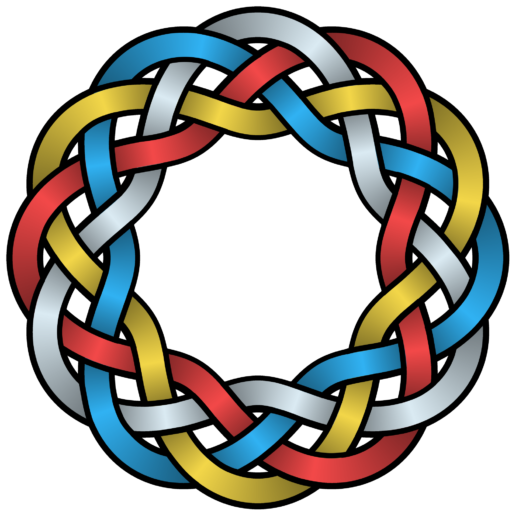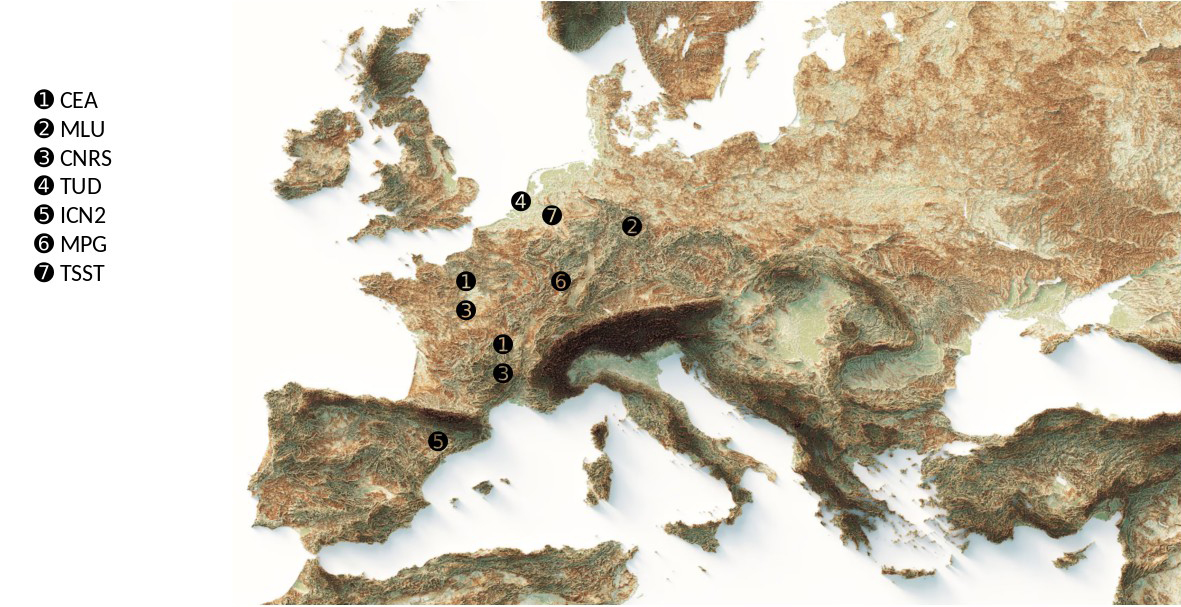
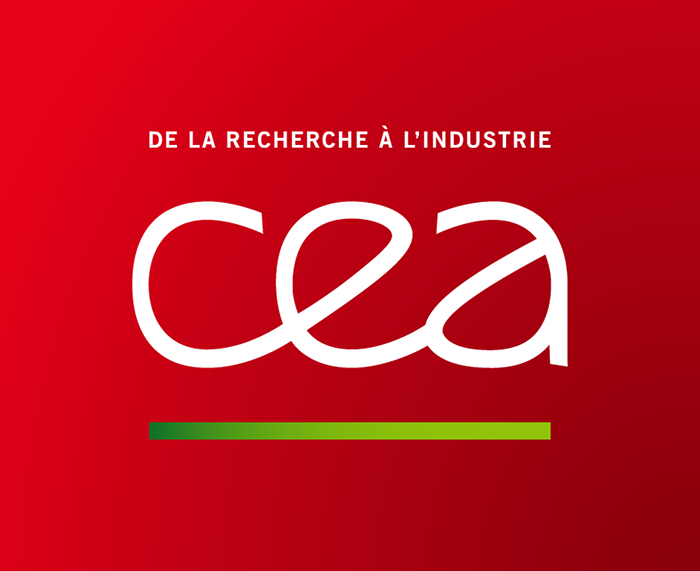
1
Commissariat à l'énergie atomique et aux énergies alternatives, FR
The CEA is a public research organisation with approx. 16,000 staff members. Its mission is to develop know-how and to assure the technological transfer in a large variety of civil and defence industrial applications in areas such as nuclear energy, biotechnology, environmental protection, optoelectronics, microelectronics. CEA is also committed to basic science in fields such as condensed matter physics (DRF department). CEA was identified by Reuters as a main world leader for innovation.
2
Martin-Luther-Universität Halle-Wittenberg, DE
Martin-Luther-University Halle-Wittenberg (MLU) is one of the oldest Universities in Germany and the largest university in the state of Saxony-Anhalt. It is an efficient, modern university, which maintains the highest requirements for teaching and research in social sciences and humanities as well as in natural sciences. At present, more than 20,000 students are enrolled at the university, which encompasses over 250 subjects in 9 faculties and more than 15 specialized interdisciplinary research centers or specialized thematic facilities. The University invests into renowned scientists, high-tech equipment, and a modern research environment to foster research, research-training and cooperation with industry, policy makers, and public actors. About 2000 scientists are employed to conduct basic and applied research in various thematic areas.
MLU is participating by the group of nanostructured materials at the institute of physics, and the Center for Materials research (CMAT). The group of nanostructured materials is working on several areas of spintronics and spin dynamics. One of these areas is thin film deposition and material development. Especially in the area of oxide pulsed laser deposition the group is active and has recently developed a new fabrication process of thin film YIG which is highly relevant for the project. A second area is nano lithography and patterning techniques. There is a long standing expertise in ultra high resolution lithography and patterning by lift-off or dry etching. Also patterning of 3D structures is available and recently the fabrication of high quality free standing or suspended YIG nanostructures has been demonstrated. This process and the resulting structures are at the core of PALANTIRI. A third pillar of the research is characterization which includes structural, magnetic and high frequency characterization which all will be used in the project.

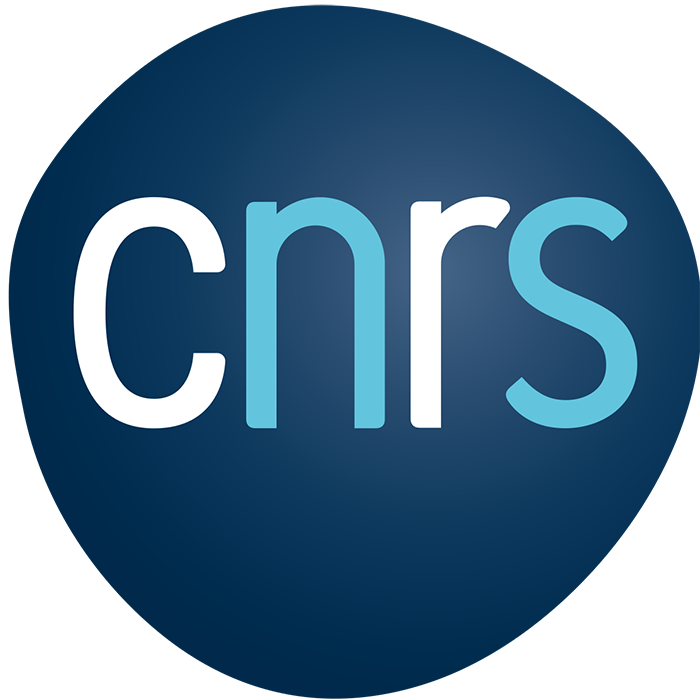
3
Centre national de la recherche scientifique, FR
The CNRS is a governmental fundamental research organization (the largest) under the administrative authority of France’s ministry of research. CNRS carries out research in all scientific fields to improve knowledge, ensure economic and technological development and solve complex societal needs. CNRS is organized in more than 1000 laboratories, either on their own or in partnership with universities, other research organizations or industry. CNRS has more than 300 cooperation programs with 40 countries. CNRS annual budget (several billion) comes mainly from French government and own resources representing 1/4 of France public spending on civilian research. The CNRS is strong of 18 Nobel laureates and 11 Fields Medals. The present project will be managed by the Rhone-Alpes Regional Office of CNRS (DR11) which is located in Grenoble.
4
Delft University of Technology, NL
General description of the institution
Delft University of Technology (https://www.tudelft.nl/en/) is the largest and most diverse engineering university in the Netherlands. The Blanter group is part of the Department of Quantum Nanoscience at the faculty of Applied Sciences, with a challenging and interdisciplinary research environment focused on investigating physical processes at the nanoscale. These studies involve the development of innovative fabrication and measurement techniques and advanced theoretical models. The Department is part of the Kavli Institute of Nanoscience at Delft, one of the five nanoscience institutes endowed by the Kavli Foundation (Delft, Cornell, Harvard, Caltech, and Berkeley) and the only one outside the United States.


5
Catalan Institute of Nanoscience and Nanotechnology, ES
General description of the institution
The Catalan Institute of Nanoscience and Nanotechnology (ICN2) is a young, and increasingly recognised research centre whose research lines focus on the newly discovered physical and chemical properties that arise from the fascinating behaviour of matter at the nanoscale. Its core activities are: Frontier Basic and Applied Research in Nanoscience and Nanotechnology, Technology Transfer, and Public Outreach. ICN2 operates under best-practice principles to seek excellence at all levels (scientific, technical, management) with flexibility in financial management, HR and technology transfer, governance by independent Boards, and strong participation in local and international competitive project programs. With 17 research units or departments and 3 Specialised Technical Divisions, the Institute promotes collaboration among scientists from diverse backgrounds (physics, chemistry, biology, and engineering) to develop basic and applied research, always seeking interactions with local and global industry. ICN2 trains researchers in nanotechnology, develops numerous activities to facilitate the uptake of nanotechnology by industry, and promotes networking among scientists, engineers, technicians, business people, society, and policy makers. ICN2 plays an active role in disseminating nanoscience to a broad audience, promoting several local outreach programmes for high school students and interacting closely with universities, research and technology centres. ICN2 numbers some 200 staff from over 30 countries, of which about 170 are researchers. ICN2´s achievements were recognised by the Spanish government, with ICN2 awarded in 2014 (and renewed in 2018) the most prestigious Severo Ochoa Centre of Excellence accreditation – one of about 20 centres in Spain to hold the award. ICN2 is consistently ranked amongst the top-10 of Spanish research institutes in terms of excellence in scientific publications (SCIMAGO rankings). One half of ICN2´s budget comes from competitive grants or industry projects, including ERC grants and coordinated FET projects. Currently, ICN2 participates in 26 European projects and coordinates 6 of them.
6
Max Planck Institute for the Science of Light, DE
The Max Planck Institute for the Science of Light (MPL) is a world leading institution in fundamental research and covers a wide range of topics: nonlinear optics, quantum optics, nanophotonics, photonic crystal fibres, optomechanics, quantum technologies, biophysics, and—in collaboration with the Max-Planck-Zentrum für Physik und Medizin – links between physics and medicine. MPL was founded in 2009 and is one of over 80 institutes that make up the Max Planck Society, whose mission is to conduct basic research in the service of the general public in the natural sciences, life sciences, social sciences and the humanities. The MPL attracts excellent researchers, post-docs and doctoral students from all over world. Doctoral students are enrolled with the Friedrich-Alexander-University Erlangen-Nuremberg and have the opportunity of participating in three excellent graduate schools: the International Max-Planck Research School (IMPRS), the Max Planck School of Photonics (MPSP) and the Erlangen Graduate School in Advanced Optical Technologies (SAOT). The MPL has 3 division, 9 independent research groups, 2 emeritus research groups and 4 technology and development groups. Moreover, it is part of the Max-Planck-uOttawa Center for extreme and quantum optics. The Max Planck Society is committed to sustain a healthy work-life balance and a family-friendly environment. It also seeks to increase the number of individuals with disabilities in its workforce and the number of women in those areas where they are underrepresented.

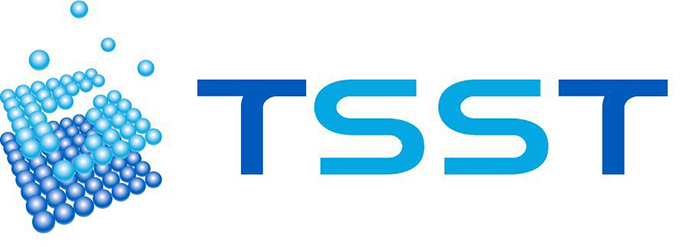
7
Twente Solid State Technology, NL
The CNRS is a governmental fundamental research organization (the largest) under the administrative authority of France’s ministry of research. CNRS carries out research in all scientific fields to improve knowledge, ensure economic and technological development and solve complex societal needs. CNRS is organized in more than 1000 laboratories, either on their own or in partnership with universities, other research organizations or industry. CNRS has more than 300 cooperation programs with 40 countries. CNRS annual budget (several billion) comes mainly from French government and own resources representing 1/4 of France public spending on civilian research. The CNRS is strong of 18 Nobel laureates and 11 Fields Medals. The present project will be managed by the Rhone-Alpes Regional Office of CNRS (DR11) which is located in Grenoble.
